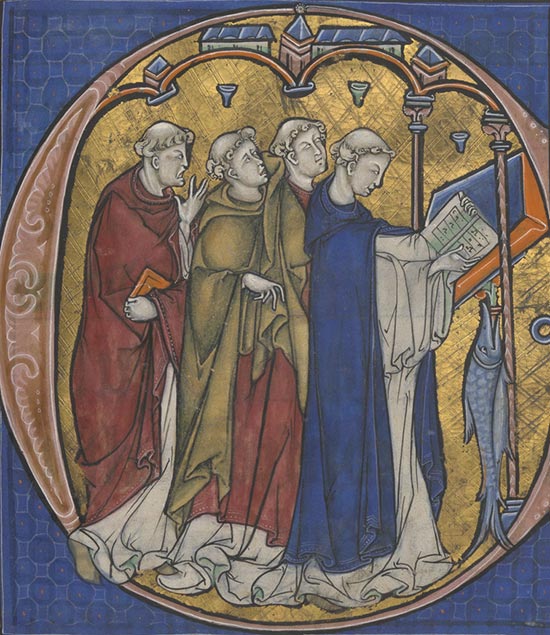
Traditionally ascribed to King David, the Hebrew Book of Psalms is a collection of sacred poems that constitute the longest and most popular book of the Bible. These poems include expressions of lament and loss, petitions and confessions, as well as exclamations of joy and thanksgiving— universal themes that speak to what it means to be human.
Sing a New Song traces the impact of the Psalms on men and women in medieval Europe from the sixth to the sixteenth century. It encompasses daily practices and performance, as well as the creation of Psalters (Books of Psalms), among the most richly ornamented manuscripts ever made. Stressing the integration of the Psalms in medieval life, topics range from children saying their prayers to people preparing to die.
The beginning of the exhibition is devoted to the Psalms’ origins, with special emphasis on David as composer. The following two sections show how Psalms permeated the intellectual culture of medieval Europe through translations into Latin and the vernacular. Children used Psalters to learn to read, patrons commissioned versions in their native languages, and theologians, glossing the Psalms, authored the most influential interpretive writings of the Middle Ages. The next section is dedicated to the medieval Psalter. More than any other text, Psalms informed the language of the liturgy, and the Psalter served effectively as the prayer book of the Church. Priests, monks, and nuns were required to pray all 150 Psalms weekly. Lay people across Europe, imitating these practices, fueled a demand for Psalters —often gloriously illuminated. Another section examines performance of the Psalms within the monastery, the church, and the private home. The final section examines the apotropaic function of Psalm texts, the use of Psalms as penitential atonement, and how Psalms comforted the dying.
Organized by Roger S. Wieck, Melvin R. Seiden Curator and Department Head of Medieval and Renaissance Manuscripts; in collaboration with Deirdre Jackson, Assistant Curator of Medieval and Renaissance Manuscripts; Frederica Law-Turner, Contributing Guest Curator; and Joshua O'Driscoll, Associate Curator of Medieval and Renaissance Manuscripts.
Sing a New Song: The Psalms in Medieval Art and Life is made possible by an anonymous donor, in memory of Melvin R. Seiden. Generous support is provided by Mr. G. Scott Clemons and Ms. Karyn Joaquino, the Lucy Ricciardi Family Exhibition Fund, Martha J. Fleischman, and Dr. Wendy A. Stein and Mr. Bart Friedman, with assistance from the Samuel H. Kress Foundation, Caroline Sharfman Bacon, and Dr. Robert DaVanzo.
Chanting Clerics, from the Windmill Psalter, England, London, late thirteenth century. The Morgan Library & Museum, MS M.102, fol. 100r (det). Photography by Carmen González Fraile.
